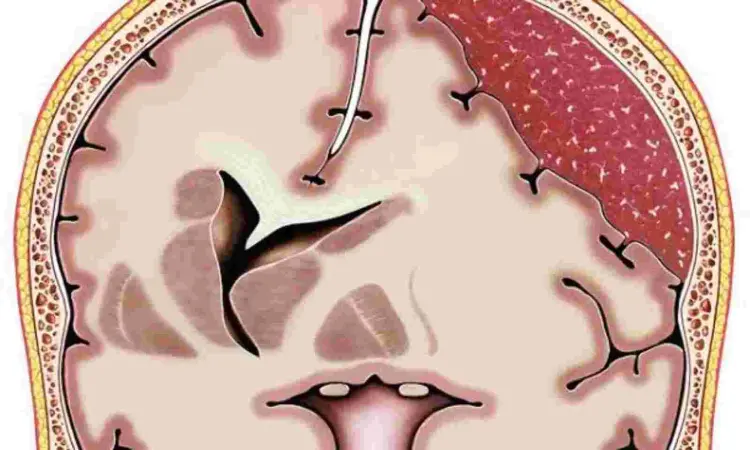- Home
- Medical news & Guidelines
- Anesthesiology
- Cardiology and CTVS
- Critical Care
- Dentistry
- Dermatology
- Diabetes and Endocrinology
- ENT
- Gastroenterology
- Medicine
- Nephrology
- Neurology
- Obstretics-Gynaecology
- Oncology
- Ophthalmology
- Orthopaedics
- Pediatrics-Neonatology
- Psychiatry
- Pulmonology
- Radiology
- Surgery
- Urology
- Laboratory Medicine
- Diet
- Nursing
- Paramedical
- Physiotherapy
- Health news
- Fact Check
- Bone Health Fact Check
- Brain Health Fact Check
- Cancer Related Fact Check
- Child Care Fact Check
- Dental and oral health fact check
- Diabetes and metabolic health fact check
- Diet and Nutrition Fact Check
- Eye and ENT Care Fact Check
- Fitness fact check
- Gut health fact check
- Heart health fact check
- Kidney health fact check
- Medical education fact check
- Men's health fact check
- Respiratory fact check
- Skin and hair care fact check
- Vaccine and Immunization fact check
- Women's health fact check
- AYUSH
- State News
- Andaman and Nicobar Islands
- Andhra Pradesh
- Arunachal Pradesh
- Assam
- Bihar
- Chandigarh
- Chattisgarh
- Dadra and Nagar Haveli
- Daman and Diu
- Delhi
- Goa
- Gujarat
- Haryana
- Himachal Pradesh
- Jammu & Kashmir
- Jharkhand
- Karnataka
- Kerala
- Ladakh
- Lakshadweep
- Madhya Pradesh
- Maharashtra
- Manipur
- Meghalaya
- Mizoram
- Nagaland
- Odisha
- Puducherry
- Punjab
- Rajasthan
- Sikkim
- Tamil Nadu
- Telangana
- Tripura
- Uttar Pradesh
- Uttrakhand
- West Bengal
- Medical Education
- Industry
Decompressive Craniectomy versus Craniotomy for Acute Subdural Hematoma

Traumatic acute subdural hematomas frequently warrant surgical evacuation by means of a craniotomy (bone flap replaced) or decompressive craniectomy (bone flap not replaced). Craniectomy may prevent intracranial hypertension, but whether it is associated with better outcomes is unclear.
Decompressive craniectomy is a surgical procedure in which a large skull section is removed, and the underlying dura mater is opened widely. The procedure has been shown to reduce mortality when used as a last-tier treatment for post-traumatic intracranial hypertension but is associated with a higher risk of unfavorable outcomes when used as a second-tier treatment. However, the most common indication for a decompressive craniectomy is a traumatic subdural hematoma.
Because acute subdural hematomas are often associated with underlying parenchymal brain injury, brain swelling can be encountered intraoperatively or postoperatively.Therefore, a primary decompressive craniectomy is often performed at the time of evacuating an acute subdural hematoma, either because of brain swelling that does not allow replacement of the bone flap without compression of the brain or preemptively in anticipation of swelling in the ensuing days based on clinician judgment. In the former situation, the bone flap must be left out. However, there is limited evidence with respect to the added value of performing a decompressive craniectomy preemptively in this context.
Hutchinson et al conducted a multicenter, randomized, controlled trial to compare the outcomes of craniotomy and decompressive craniectomy in adult patients with traumatic acute subdural hematoma.In this trial involving adult patients with traumatic acute subdural hematomas warranting surgical evacuation, they found no significant difference across GOSE outcomes between the craniotomy group (bone flap replaced) and the decompressive craniectomy group (bone flap left out) at 12 months, and results for most secondary outcomes were similar in the two groups.
Although their trial showed no significant difference in mortality or GOSE outcomes between the craniotomy group and the decompressive craniectomy group, additional cranial operations within 2 weeks after randomization were performed more frequently in the craniotomy group and most of them were decompressive craniectomies for brain swelling. However, patients in the decompressive craniectomy group had more wound-related complications and surgical-site infections. Even though disability and other outcomes were similar in the two groups, the trial may have practical implications. If the bone flap can be replaced without compression of the brain, surgeons may consider doing so, as opposed to performing a preemptive decompressive craniectomy. These findings may not be relevant for resource-limited or military settings, where preemptive craniectomy is often used owing to the absence of advanced ICU facilities for postoperative care.
In this trial involving adult patients undergoing evacuation of traumatic acute subdural hematoma, decompressive craniectomy and craniotomy yielded similar results with respect to overall outcomes at 12 months. Additional craniectomies were performed more frequently in the craniotomy group, but wound complications and surgical-site infections occurred more frequently in the decompressive craniectomy group.
Among patients with traumatic acute subdural hematoma who underwent craniotomy or decompressive craniectomy, disability and quality-of-life outcomes were similar with the two approaches. Additional surgery was performed in a higher proportion of the craniotomy group, but more wound complications occurred in the craniectomy group.
Reference
Decompressive Craniectomy versus Craniotomy for Acute Subdural Hematoma
List of authors.
Peter J. Hutchinson, Ph.D., F.R.C.S. (SN), Hadie Adams, M.D., Midhun Mohan, M.R.E.S., M.R.C.S., Bhagavatula I. Devi, M.Ch., et al., for the British Neurosurgical Trainee Research Collaborative, NIHR Global Health Research Group on Acquired Brain and Spine Injury, and RESCUE-ASDH Trial Collaborators*
June 15, 2023
N Engl J Med 2023; 388:2219-2229
DOI: 10.1056/NEJMoa2214172
MBBS, DrNB Neurosurgery
Krishna Shah, MBBS, DrNB Neurosurgery. She did her MBBS from GMC, Jamnagar, and there after did direct 6 Year DrNB Neurosurgery from Sir Ganga Ram Hospital, Delhi. Her interests lie in Brain and Spine surgery, Neurological disorders, minimally invasive surgeries, Endoscopic brain and spine procedures, as well as research.
Dr Kamal Kant Kohli-MBBS, DTCD- a chest specialist with more than 30 years of practice and a flair for writing clinical articles, Dr Kamal Kant Kohli joined Medical Dialogues as a Chief Editor of Medical News. Besides writing articles, as an editor, he proofreads and verifies all the medical content published on Medical Dialogues including those coming from journals, studies,medical conferences,guidelines etc. Email: drkohli@medicaldialogues.in. Contact no. 011-43720751


